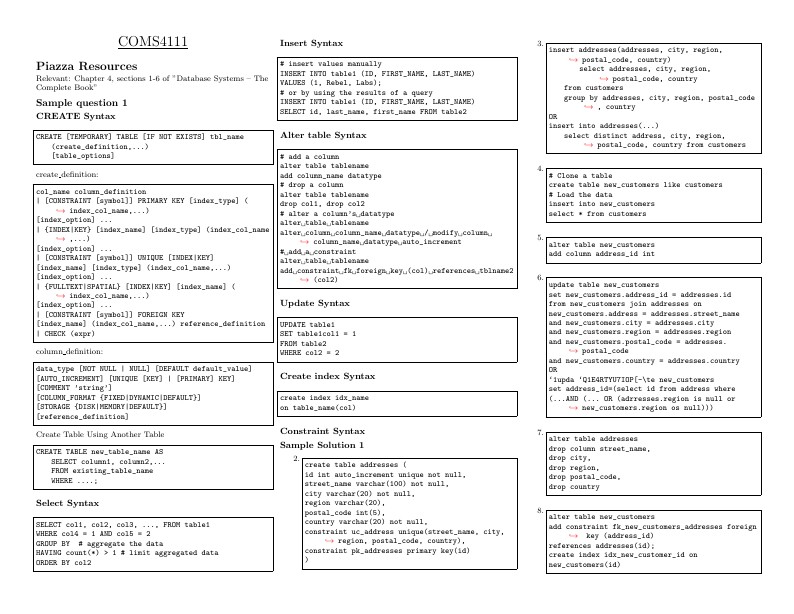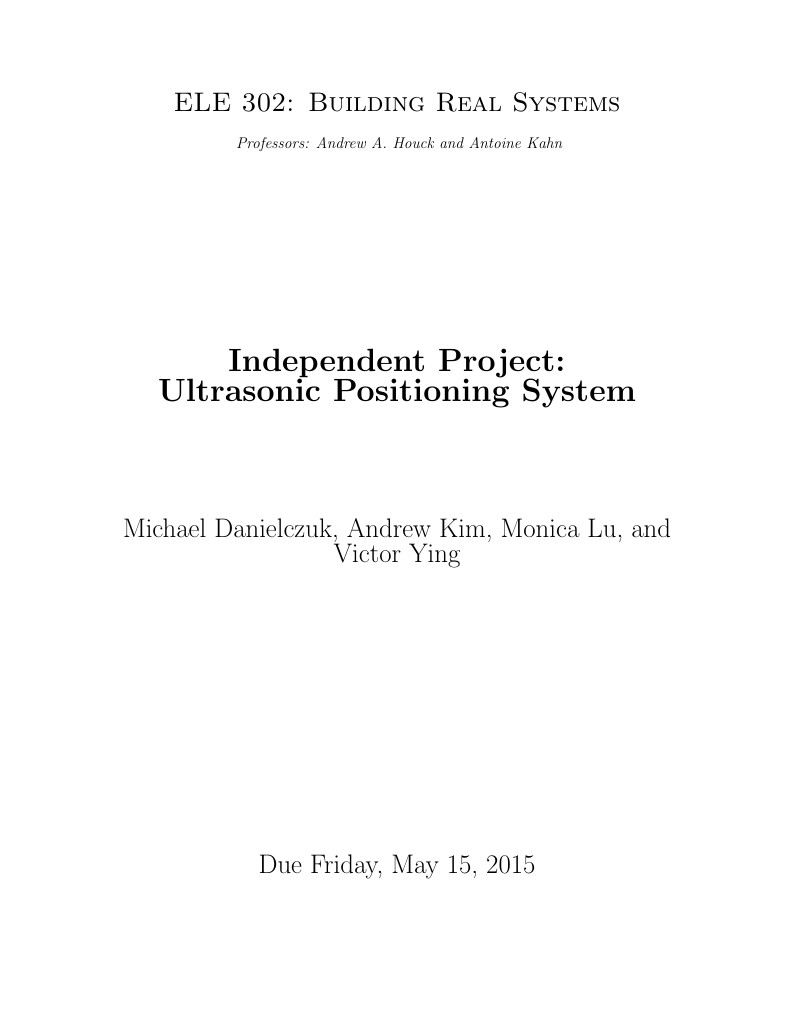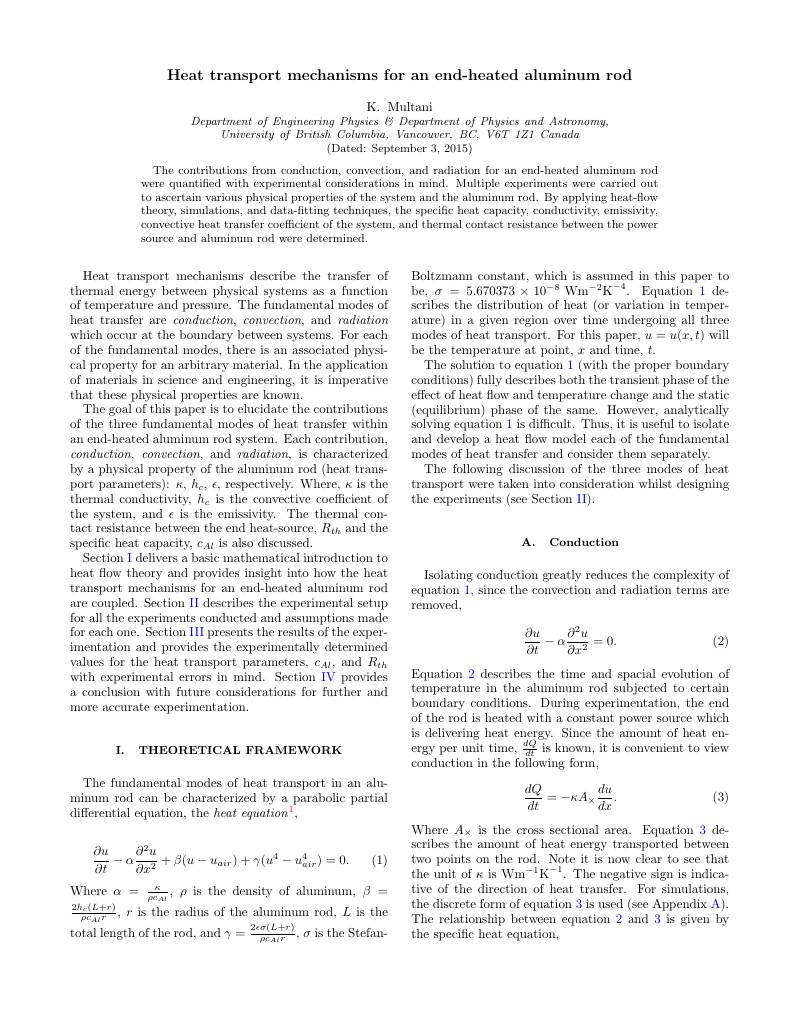Community articles — Source Code Listing
Recent

A cheat sheet for computer science students. The code style is user-friendly.

An indoor positioning system relying on time difference of arrival measurements of ultrasonic pings from fixed transmitters. Code available at https://github.com/YingVictor/ultrasonic-positioning

The contributions from conduction, convection, and radiation for an end-heated aluminum rod were quantified with experimental considerations in mind. Multiple experiments were carried out to ascertain various physical properties of the system and the aluminum rod. By applying heat-flow theory, simulations, and data-fitting techniques, the specific heat capacity, conductivity, emissivity, convective heat transfer coefficient of the system, and thermal contact resistance between the power source and aluminum rod were determined.
\begin
Discover why over 20 million people worldwide trust Overleaf with their work.